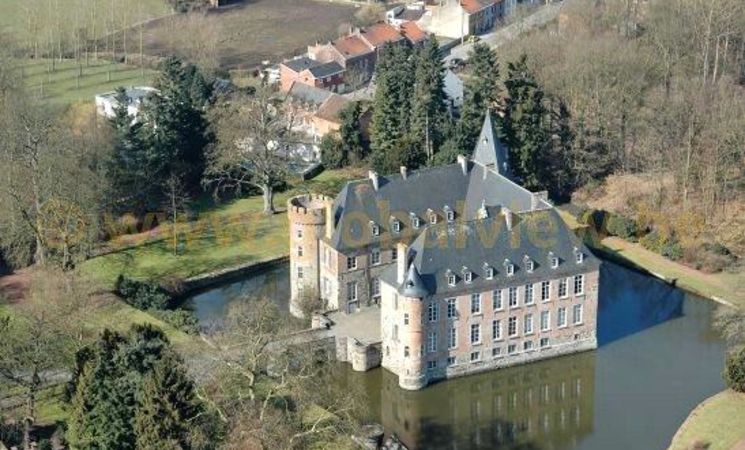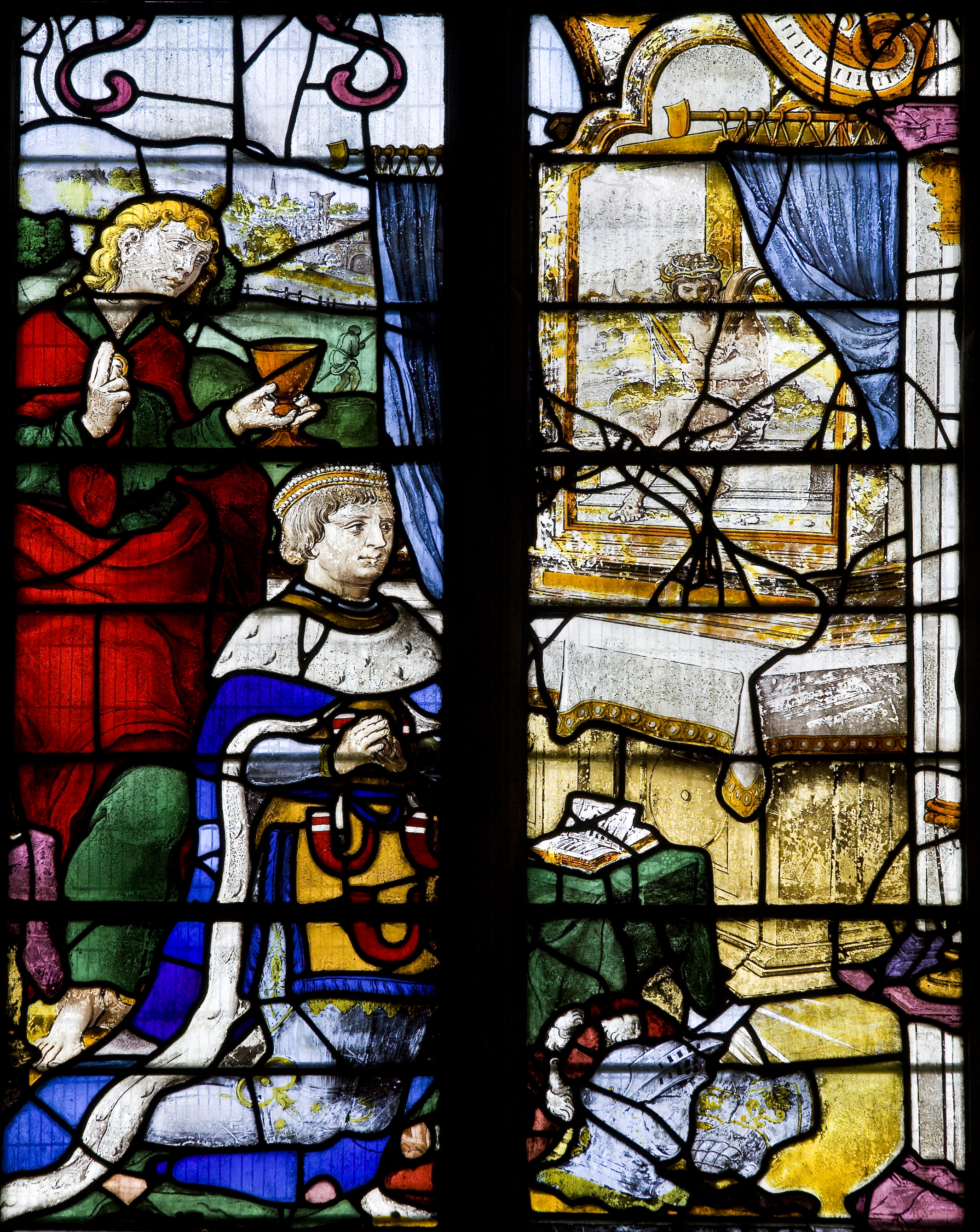
Wapenvoering:

Maximiliaan van Horne (1480 – 3 februari 1542) was een edelman uit een jongere tak van het huis Horne.
Hij was zoon van Arnold van Horne en van Margaretha van Montmorency.
Hij was heer van Houtkerke, Heeze, Geldrop, Gaasbeek en Sint-Winoksbergen, en burggraaf van Veurne. Als rechtstreekse afstameling van het huis Horne vocht hij het legaat aan waarbij Jan van Horne het graafschap Horne toewees aan aan zijn stiefzoon Filips van Montmorency.
Hij was kamerheer van Filips van Oostenrijk, vervolgens van keizer Karel V en werd in 1515 ridder in de Orde van het Gulden Vlies.
Hij trouwde in 1504 met Barbara van Montfoort. Zij was de dochter van Jan III van Montfoort en Wilhelmina van Naaldwijk.
Hun kinderen waren:
- Hendrik van Horne (†1540)
- Maarten van Horne (1510-1570)
- Anna van Horne
Jan van Naaldwijk, auteur van ‘de Kronieken van Holland’ stond bij haar nicht Barbara van Montfoort zwaar in het krijt. Als minder gefortuneerde van een adellijke familie was zij in staat geweest te huwen met iemand uit de hogere adel. Hij zegt over haar ‘heeft mij also voel doechs ghedaen […]c hoer mijmermeer voldancken’, en mach waerom jc […]dich bin altijt voer hoer te bidden ende hoer dijenen […] sij mijn van doen mach hebben‘.
Jan had een goede rede het goed met haar te vinden, Maximiliaan bevond zich in de hoogste kringen van het Bourgondisch hof als ridder van het gouden vlies in 1515 en ontvanger van een brief van Erasmus in 1521. In de kabinet van bijzondere boeken van de VU bevindt zich een prachtig gebonden en met kalfsleer en goed bedrukt exemplaar van de uitgegeven werken van Erasmus dat waarschijnlijk aan zijn zoon Maarten van Horne heeft toebehoord.


De Horne familie- en aliantiewapens zoals ze heden ten dagen prijken in in de de N.D. au Sablon te Brussel

Voorouders
| Voorouders van Maximiliaan van Horne | ||||
|---|---|---|---|---|
| Overgrootouders | Jan van Horne (1380-1436) ∞ 1410 Margaretha de la Tremouille (1368-1420) | Johan II van Lannoy (1410-1493) ∞ Johanna Tyrel van Brimeu (1410-1459) | Johan II van Montmorency (1400-1477) ∞ Johanna van Fosseux (1401-1431) | Johan IV van Gent-Villain (-1450) ∞ Gundola Raes van Ibermont (1395-1439) |
| Grootouders | Filips van Horne (1421-1488) ∞ 1450 Johanna van Lannoy (1430-1475) | Johan III van Montmorency (1422-1477) ∞ Gundola van Gent-Villain (-1485) | ||
| Ouders | Arnold van Horne (1460-1505) ∞ Margaretha van Montmorency (1440-) | |||
| Maximiliaan van Horne (1480-1542) |
Maximiliaan onderhield contacten met de filosoof Desiderius Erasmus (1466-1536) en correspondeerde ook met met Hugo de Groot.
Een brief aan Erasmus (over een boek dat hij was vergeten te retourneren?):
Cum nil mutuum dari soleat nisi spe idem in genere suo idem recipiendi, tandem mi Groti Erasmi libellum tuum remitto, quem utendum sane non possidendum dederas. Fateor me ita lentum in relegando illo fuisse ut vix illegitimae usurpationis notam effugerim, usufructum quidem illius mihi concesseras, sed solummodo usufructum, quem scio a iurisperitis definiri ius alienis rebus utendi, fruendi, sed ad tempus legibus definitum, et salva rerum substantia. Sed heus usucapionis potius titulum me mihi adsciscere viderer, ni in integrum iam restitutionem pararem, adiectione alioquin dominii per continuationem possessionis periculum fuisset ne in illum tandem ius usurparem. Quidquid id sit, agnosco culpam, quam primo nostro occursu amica me libatione expiaturum spondeo. Vale et amicitiae hostimentum redditum puta. Hoesdae Prid. Non. Aug. 1509.
Tuus quamdiu vixerint Musae
Maximilianus de Hornes.
….. vander Mylio (salutem) amicissimam.

Zijn grafbeeltenis door Jean Monne is nog steeds te vinden in de kerk tegenover het kasteel in Braine le Chateau.

Chronologie
1504 januari 10
Grauwels III nr. 2109
Maximiliaan van Horn, burggraaf van Berghen, bekrachtigt de overeenkomst van 1503
december 7, (regest nr. 1589)
fol.5v vonnisnr. 3
Proces tussen de ingezetenen van het dorp LEENDE en de Heer MAXIMILIAEN VAN HOERNE Heer van Gaesbeke en Leende – de ingezetenen van Leende verklaren dat de dorpen HEEZE & LEENDE te leen worden gehouden van de Hertog van Brabant, zij vallen onder de protectie van de BLIJDE INCOMSTE en ze bezaten een gemeenschappelijke heide genoemd ‘die gemeynte van Heze ende Leende’ waar ze altijd turf hebben gestoken, hun beesten op gedreven hebben enz. – ook ontstaat discussie over de BIJENTIEND – in het stuk worden de grenspalen genoemd ‘te wetenen van beneden VOSTERVOERT totten OUDEN GALGENBERCH toe ende vanden ouden Galgenberch totten NUWEN GALGENBERCH ende van dair voirts tot INT POYEERS opten NAECTEN MAN by den ADEERCOLCK’ – er wordt verwezen naar oudere retroacta – zeer lange acte tot fol.15 – 14 juli 1529.
FICHE 8 inventarisnummer 576 periode 1529
============================================================
fol.360 vonnisnr. 229
ARNT VAN HOEGHTEN met zijn consorten inwoners van LEENDE contra JAN WOUTERS de SCHOUT van de HEER MAXIMILIAAN VAN HOIRNE over het gebruik van de gemeynt – in de acte verschijnen de vorsters van LEENDE HEEZE en GELDROP – er is in het stuk sprake van het HEILIG SACRAMENT in de kerk van LEENDE en van een BEDEVAART naar ROME of SINT JACOP in GALLICIE en het laten zetten van een glazen venster in genoemde kerk ter waarde van 30 Karolus guldens en vele andere betalingen – interessante acte – bijzonder lange acte – 9 april 1529.
13-3-1506: Barbara van Montfoerde, hulde door Jan Potter die Oude, schout te Naeldwijck, na
Hogenda Lek en Polananen
overdracht door haar moeder Wilhelmyne van Naeldwijck, gehuwd met heer Jan, heer van
Montfoort (6463, fol. 11 en 6484, fol. 153v).
16-5-1510: Pieter Hanneman na overdracht door Barbara van Montfoert, gehuwd met Maximiliaen van Hoerne, heer van Gaesbeecke, met recht van lossing (6463, fol. 55v).
============================================================
